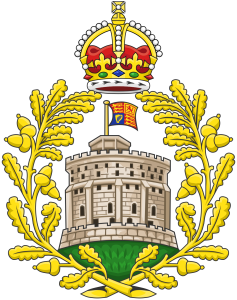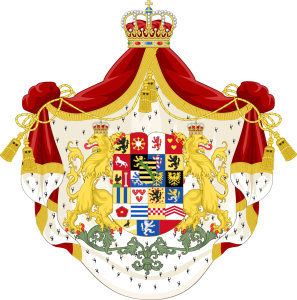The earliest dates in the ranges for my Y DNA matches predate the consistent use of surnames. The blacksmith in a village might be known as John the Smith (to distinguish him from John the Miller or John the Farmer) and eventually this can become John Smith. But he may end up being called John Strong (if he was particularly muscular) or John Redman (due to the colour of his hair). The name Stanley is supposed to refer to someone who comes from a stony place. Because there are many millers, farmers and stony places, a genetic link between families with the same name cannot be assumed.
I am assuming that my ancestors all have the English language in common. This may not be correct. Many settlers anglicised their original family names in order to fit in with their new surroundings. For example, Mueller can become Miller, Carteret becomes Carter, Popoff becomes Preston. Most notably, Sachsen-Coburg und Gotha (shown left) became Windsor (shown below) in 1917 as the British Royal Family reacted to anti-German sentiment during WW1.
 The River Suck marks the boundary between Roscommon and Galway. The land which it drains consists of moorland, water meadows and pastureland. Stony places are few and far between. My ancestors may have settled in the area bringing their family name from a place where it was more appropriate. Conversely, if they lived close to the only stony place for miles around, that might be a good enough reason to give them that name.
The River Suck marks the boundary between Roscommon and Galway. The land which it drains consists of moorland, water meadows and pastureland. Stony places are few and far between. My ancestors may have settled in the area bringing their family name from a place where it was more appropriate. Conversely, if they lived close to the only stony place for miles around, that might be a good enough reason to give them that name.
If the family did originate in a stony place, then I need to look at variations. In Irish, ‘bhoireann’ which means stony place. This can be anglicised to Burren. I am keeping an open mind on the names on my list. I am also open to the possibility that someone’s father was not who they thought that it was.

